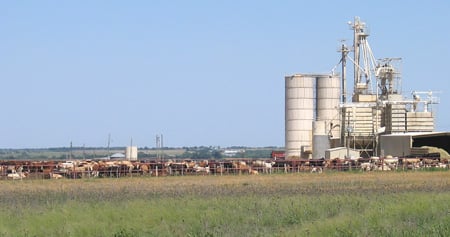Ranching in a Changing Land
By Elmer Kelton
It has been said that ranchers and farmers are the original environmentalists. They are directly and forcefully affected every day by their natural environment. Typically, the first thing they do when they step outside early in the morning is to look for sign of a rain cloud. Rainfall or the lack of it, the weather cold or hot, the availability of water are concerns with which they must deal day by day, year by year.
To whatever extent technology has allowed, they have tried to influence their environment to their benefit. Some of the results have been favorable. Others have fallen victim to the unwritten law of unintended consequences, trading one set of problems for another.
A pristine environment prevailed for the first Texas ranches that began in the late 1600s and early 1700s with Spanish land grants along the Rio Grande. . . .
Texas Wine Country
By Melinda Esco
Wine can be made from just about any fruit but most, if not all, commercial Texas wines are made from grapes. Texas winemakers are recognized in international wine competitions and the industry has grown significantly over the past couple of decades.
For centuries, grapes have grown wild in Texas. Fifteen native species grow here, giving Texas the distinction of claiming more native species than anywhere in the world. In the 1600s, Spanish missionaries, with vines they brought from Mexican missions, planted grapes near the Rio Grande close to present-day El Paso, thus establishing the first vineyard at the Ysleta Mission. But for many early Texas settlers, grape growing was unfamiliar. . . .
The State of Texas Agriculture
The number and nature of farms have changed over time. The number of farms in Texas has decreased from 420,000 in 1940 to 241,500 in 2016, with an average size of 537 acres. The number of small farms is increasing — but part-time farmers operate them. . . .
- Texas Agriculture Cash Receipts for Commodities
- Principal Crops in Texas
- Texas Crop Production: Acres, Yield, Value
The Legendary Cattle Drives
No single endeavor has marked the image of Texas in the national mind more than the cattle drive. For more than a century, writers have romanticized the work and the life of the cowboy.
Cattle have been raised in Texas from the time the Spanish attempted to establish missions and domesticate the Indians, beginning in the mid-18th century.
It was primarily a small-scale industry during the Republic and early statehood. Most cattle were slaughtered for their hides and tallow, since the meat could not be preserved for long with the methods then used.
Many of the early cattle were longhorns, descendants of Spanish ranch and mission herds, with horn spreads of four to eight feet. . . .


